Photo
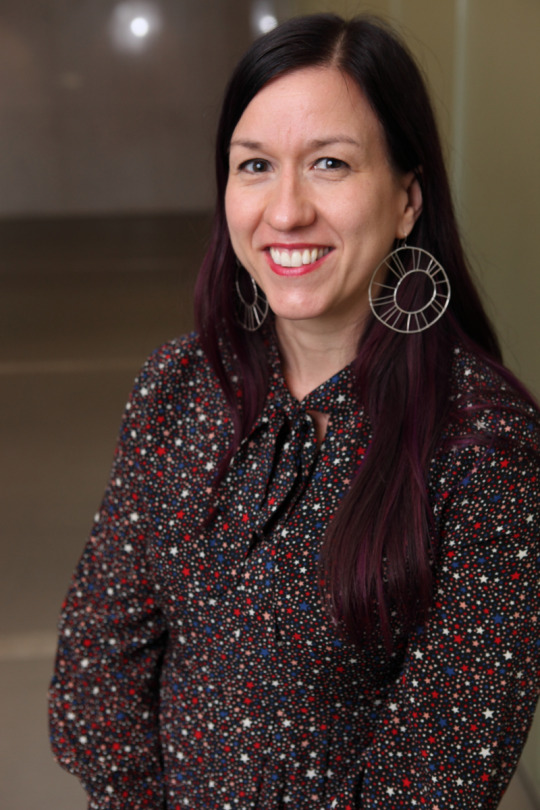
Sarah V. Harlan, Partnerships Team Lead, Knowledge SUCCESS Project, Johns Hopkins Center for Communication Programs
Advisor, Family Planning Voices
Durham, N.C., U.S.A.
Family Planning Voices is capturing stories that are coming from this immense global family planning movement. But it’s also this incredible story bank for people to use as they’re doing advocacy, or as they’re doing education, or talking to providers. So in addition to the importance of actually collecting the stories, the stories can be used in a number of different ways. So that’s what makes the collection so exciting for me. We can slice and dice it. If you’re visiting a country and talking to people about IUDs, you can look for those stories in the collection and use them in your work. And what I’ve found, especially in some of the advocacy work that I’ve done, data doesn’t always convince someone on its own, whether to change a policy or to change behavior. But if they’re actually hearing in someone else’s own words why that’s important to them, or what difference it’s made for them—or even from a provider in terms of what they’ve seen from their patients—that can really change someone’s mind.
Interviewer: Marta Pirzadeh
Photographer: David Alexander
4 notes
·
View notes
Photo

Elizabeth Futrell, 120 Under 40 Winner
Senior Technical Writer, Pathfinder International
Former Project Lead, Family Planning Voices
U.S.A.
[on taking inspiration from HONY for FP Voices]: I thought, wow. We have those stories too - can we find a way to do something like it? And I was also thinking about the fact that we’re just inundated with information and part of [K4Health’s] job is to reduce the noise and pick out what’s really important. So I liked that style - a simple portrait and a brief quote that takes a minute to read but says something really important. People can actually do that...
...Almost everyone that I talked to, when you ask them how they got into [family planning], the majority go back to an experience they had or something that they saw growing up. The situation of their mother, or friends in the community, who had a different path than they did. I feel like everyone is motivated to work in family planning by things that they’ve seen and would like to change.
Interviewer: Anne Kott
Photographer: David Alexander
2 notes
·
View notes
Photo

David Alexander, Digital Marketing Specialist, INFORMS
Former Lead Photographer, Family Planning Voices
Baltimore, Maryland, U.S.A.
When [the Family Planning Voices team] first sat down and started thinking about these interviews and these portraits and how they would appear and be used, we were focused on building a community. A clear aspect was really providing a headshot or a professional appearance, and so that dictated the approach that I was going to take. Because I know that we weren’t making lifestyle or narrative art photography, we were focused on more of a commercial portrait style so that they could have sort of a dual use-- not just be a powerful portrait of an individual, but also something they could then reuse as a reflection of their own professional development. The other aspect is that we’re limited to this small time frame. Most of the portraits we make happen in about five to ten minutes, which from a photography standpoint is just super fast, and so I had to figure out a way to technically create really pleasing images that could happen really fast. So that’s what led me to the style. I mostly shoot in a one light style with an umbrella, so there’s one key light, and if I have enough time, I’ll usually use a separate key light for hair or bright reflection. It’s a distinct style and it’s a style that we really decided on because of the dual use and also the technical limitations of time, which I think were really important.
Interviewer: Anne Kott
Photographer: Liz Tully
2 notes
·
View notes
Photo

Clive Mutunga, Senior Technical Advisor, Population, Environment, and Development, Office of Population and Reproductive Health, USAID
Washington, D.C., U.S.A.
Whenever you talk about integration, using Population, Health, and Environment (PHE) as an example of multisectoral integration, most people are often not totally opposed to it. But I think we need to do much more than that. If you talk to a minister of environment, and talk about looking at issues of health and population, they would say, “Oh yeah, those are important for environmental issues,” but there is always the tendency to say, “Oh, then, that’s the work of the health ministry. We are fine with it, but somebody else should take care of it.” So as a PHE community of practice, we need to be making clear asks to the various stakeholders who we wish to be part of the engagement. We need to be doing a better job of measuring and reporting the impacts of the cross-sectoral integration. I always notice that the burden of proof is upon the cross-sectoral integrated practitioners, though I feel that the burden of proof should be from those implementing vertical or siloed interventions. We are the ones who have to convince the policy makers, the decision makers, that integration makes sense, when it could be the other way around. Why are standalone programs encouraged when you’re dealing with integrated challenges at the individual, the community, and the national level? This is something that we need to be prepared for and to make sure that we have the right tools, whether they are related to policy, advocacy, doing good research, using greater approaches like knowledge management to bring all the pieces together. There is so much knowledge out there, but organizing it and putting it in formats that can be used by the various stakeholders is so critical.
Interviewer: Sarah V. Harlan
Photographer: Amy Lee
0 notes
Photo
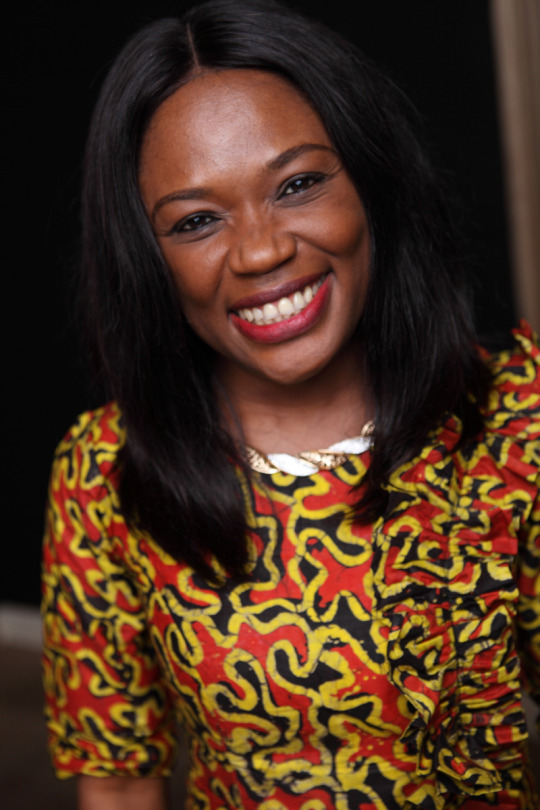
Babafunke Fagbemi, Executive Director, Centre for Communication and Social Impact
Abuja, Nigeria
In Nigeria, a lot of women are disadvantaged. And the fact that you’re educated doesn’t even give you that edge. So for women who don’t have the money, who don’t have the knowledge, who can’t even make that choice, they don’t have the social support, they’re confused about if their religious leaders approve or not – they’re in such a dilemma. So it brings me so much joy when the projects that we work on, actually interact with these women and you see the expression of hope in their eyes. First there is confusion – “I’m not sure I can do this.” Then there is doubt – “I’m not sure it’s good for me.” Then there is hope – “I can talk to my husband. I can talk to my friends. I can talk to a religious leader.” And they actually take that step. So that brings me a lot of joy. It’s not easy. At times you don’t get the results quickly, but eventually we get there.
Interviewer: Anne Ballard Sara
Photographer: David Alexander
0 notes
Photo

Dr. Simon Peter Kibira, Lecturer, Department of Community Health and Behavioural Sciences, School of Public Health, College of Health Sciences, Makerere University
PMA2020 Co-Principal Investigator
Uganda
Since I started working with the Uganda Demographic and Health Surveys (UDHS) in 2006, one thing I’ve been trying to track is contraceptive prevalence rate (CPR), and there’s been a bit of a rise. I think it was at 24% when I started working in 2006 and now we’re getting into 40%. We’ve set the targets and we may not achieve them, but we should keep raising the bar. I think the trends show that we are moving in the right direction. For me it’s those trends that show that we need to do a lot. One thing I see is from the data is the role of side effects in preventing use of family planning methods or even leading to discontinuation of family planning methods. Side effects are difficult. It’s something we shouldn’t ignore. You can provide access, but then they don’t use it because these side effects are real.
Knowledge about contraception is high, almost 100 percent. Everyone is aware of a method, but I think comprehensive knowledge is also an issue. What is interesting is, in the UDHS from 2006 and 11, about 30 percent of women who were using a rhythm method actually did not know when is the likely fertility period. They had completely wrong answers. Someone said at the beginning of the cycle, someone said at the end of the cycle. But if we ask which method they’re using, [they say, “‘I’m using the rhythm method.” So when you tick the boxes of contraceptive use, “check.” Are they using the method right? No. Are they going to get pregnant? Yes. So this also doesn’t mean we should celebrate for all who say they are using a method, because they may be using it but they don’t have the comprehensive knowledge.
Interviewer: Anne Ballard Sara
Photographer: David Alexander
1 note
·
View note
Photo

Reverend Moses Ssemugooma, Mityana Diocese Headquarters, Church of Uganda
Uganda
What is important now to the outside community is supporting the church to build capacity. If the religious leader’s capacity is built, they are able to address these issues. People who are trained and equipped with this information are able to use Bible verses to advance family planning and health in totality. I believe in the Bible where Jesus himself says, He came that I may have life and have it in abundance. It is John 10:10. But people cannot have life in abundance unless we do something to advance family planning.
Interviewer: Marta Pirzadeh
Photographer: David Alexander
0 notes
Photo

Jose “Oying” Rimon II, Director, Bill & Melinda Gates Institute for Population and Reproductive Health
Baltimore, Maryland, U.S.A.
The power and the beauty of being based at the Johns Hopkins Bloomberg School of Public Health is that—and I truly mean this—every year, you are meeting some of the best and the brightest people in public health in the world. You think Hopkins gives knowledge and skills to all the students who come here? Well, that’s true. But what Hopkins is learning from all this brilliance is also invaluable. That’s what inspires me. A student comes in and knocks on your door with a new idea and it’s like, ooh, where did that come from?
Interviewer: Sophie Weiner
Photographer: David Alexander
0 notes
Photo

Ibrahim Gamawa, Former Executive Chairman, Bauchi State Primary Healthcare Development Agency
Bauchi State, Nigeria
The Challenge Initiative’s (TCI’s) 72-hour Makeover is something like an "impossibility" happening. We normally go through contract signing, bidding, etcetera at much higher rates, but what we are seeing with TCI is beyond imagination. Something that is done within a twinkle of an eye: You close on Friday and come to work on Monday and see that the same place you left on Friday has been completely transformed. Because of that transformation, the clients feel more at home to come to access services. Even the service providers are happy to provide services to clients in a more conducive environment. TCI focuses on urban slums because that is where the population explosion is happening. When you can make those areas have quality and friendly services, you will reach more people than anticipated. Indeed, we are seeing a lot of changes and we are going to scale up these great approaches to improving access and quality.
Contributors: Rabi Ekele, Beeve Hua
0 notes
Photo

Daizie Muzira, Student, Makerere Business School
Uganda
When I’m talking to young people, I don’t say “family planning.” I don’t use that word. I say “contraceptives,” because when they tell you that, they get it quickly. So first of all, the first thing I tell them is abstinence, but they say, “We are big girls. Of course, we can’t abstain.” And I’m like, “You can!” And they’re like, “No, we can’t!” And even when I give them the different options. My friend recently got married, and she didn’t want to give birth immediately, so she came and asked me and I gave her a book. Then I took her to the hospital. She chose a method, and they told her about the IUD. She took the IUD. She wanted to have kids, but wanted to wait about three years.
Interviewer: Marta Pirzadeh
Photographer: David Alexander
0 notes
Photo

Utele Funaya, Social Mobilizer
Delta State, Nigeria
I am almost a year now on implant and I am enjoying it. I don’t have any complaints. I am not scared of getting pregnant, and I have time for my child too. That is why I was happy to join The Challenge Initiative (TCI) as a social mobilizer so that I can use myself as an example to other women and encourage them to pick up a family planning method.
Interviewer & Photographer: The Challenge Initiative
#family planning#fpvoices#service provider#africa#long-acting reversible contraceptives#Health Communication
0 notes
Photo

Manasa Priya Vasudevon, Program Manager, The YP Foundation
Youth Representative, FP2020 Reference Group
India
I wish everyone knew that they have a right to family planning. They have a right to information. There was a poster [at ICFP] that was talking about how sometimes, having more information about the different methods of contraception available may not necessarily correlate to increased uptake of contraception. Just getting more information on a subject doesn’t necessarily mean you’re going to make a choice. Maybe the choices aren’t good enough.
Interviewer: Anne Ballard Sara
Photographer: David Alexander
0 notes
Photo

Hyacinth Njin, Health Educator with Plateau State Primary Health Care Board, Jos South Local Government Area (LGA)
Plateau State, Nigeria
As an Officer-in-Charge, I had little experience conducting mobilization activities for health programs. I normally just provided information to district heads and community leaders about the health issues and asked them to pass the information down to the community members. I couldn’t understand why some people, after receiving this information, still didn’t access services. Increasing access to family planning services was a particular challenge for me in my first few months in my new role as a Local Government Area (LGA) Health Educator, as there was little or no funding dedicated for family planning mobilization. This meant that I was still relying on passing family planning information through district heads and community leaders to conduct mobilization activities and this still did not yield any result for me.
However, recent trainings and engagement with The Challenge Initiative has enhanced my mobilization skills. As a result, my engagement with community members has improved. The manner in which I and my community volunteers approach our potential clients has changed because our capacity has been developed. I am now able to do things differently as I now know a lot of things I did not know in the past. I now have interpersonal communication skills which I use in engaging with community members. The behavior change communication approach also helps me to understand why people behave in a certain way and how to address their concerns. I now target my messages to address the ideational factors that are common to people in my LGA.
Interviewer: Eje Chukwuma
Photographer: Eje Chukwuma
0 notes
Photo

Lori Adelman, Vice President of Influence and Engagement, Global Fund for Women
New York, New York, U.S.A.
I think right now there’s a reckoning in the field where non-young people are starting to understand the importance of involving young people -- but they often don’t know how. One of the most common emails that I get is, “I want to involve young people in x,y, z panel, commission, board. What do I do? Do you have any?” [Laughs.] I don’t have any, first of all. I work with some. But I think that there’s definitely fear and trepidation around where to start, and I always tell them the first place to start is to listen, and actually don’t come to the table with your ideas already in place [around how a young person should engage]. I see it all the time - you already know the report that you want to write and the points that you want to make, and then just slot in or tokenize a young person or other minority. We do this so much in our field, especially among those coming from a developed country context. Just start out by listening and start at the beginning of your process, so the sooner the better.
The other thing I would say is to actually think about resources and how you are allocating them. Young people often don’t have the ability to work for free nor should they be expected to or asked to. Just like non-young people. Most of us can’t afford to make this a voluntary gig. So we really have to be intentional in how we bring young people into the conversation and actually walk the talk and put our money where our mouth is in terms of engaging them.
Interviewer: Anne Ballard Sara
Photographer: David Alexander
0 notes
Photo
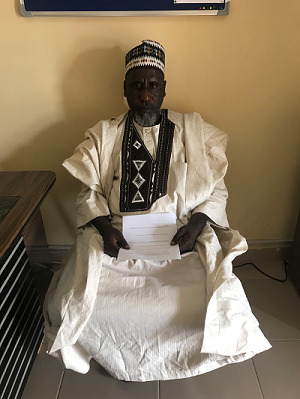
Mallam Suleiman Usman, Sarkin Malaman Toro (Leader of the. Council of Ulama Toro District)
Bauchi, Nigeria
Prior to the advent of The Challenge Initiative (TCI), child birth spacing was a very sensitive and delicate issue to discuss. I could remember even the health workers were having issues discussing child birth spacing with women of reproductive age because of religious issues. Women of child bearing age that have the desire to practice modern contraception prefer to meet health workers at home than to speak with them in the health facility because they will be shy and afraid, due to the kind of religious interpretation that was given to [contraception]. There were misconceptions on the part of the Islamic clerics. They normally interpret child birth spacing as controlling the population. But after our interaction with them using the Islamic perspective and sermon notes on child birth spacing, a lot of them now understand that spacing in-between births for the health and wellbeing of the mother and child is also promoted in the Holy Qur’an.
The training that was conducted to us [religious leaders] has created more awareness about child birth spacing based on the Islamic perspective. We are now preaching on child birth spacing to our followers with confidence and based on evidence from the Holy Book and Hadith. Now, we are using every opportunity to educate more religious leaders on correct messaging of child birth spacing based on the Islamic perspective.
Those Mallams [religious leaders] who were against child birth spacing are now champions of child birth spacing. It is now freely discussed in the mosques, at learning centers and other gatherings.
Interviewers: Beeve Hua, Amina Mahdhi
Photographer: Martins Enemali
0 notes
Photo
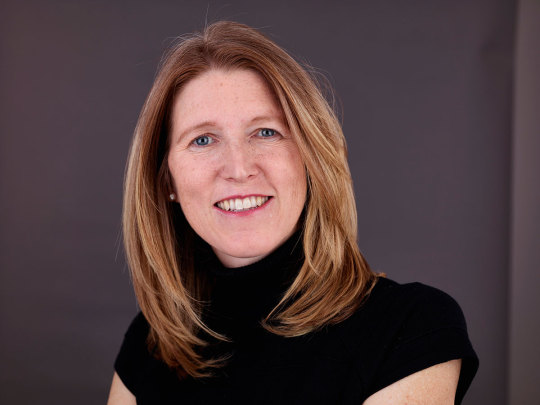
Cara Honzak, Senior Technical Advisor for Population, Health, and Environment (PHE), Pathfinder International
U.S.A.
During my tenure at World Wildlife Fund, my supervisor and I worked hard to try to develop a population policy within WWF, across the whole global network, to see if the network was ready to directly address population, women’s health, and family planning. It would have been one of several WWF network-wide social policies – there was one on gender, indigenous peoples, etc. But the population policy didn’t go through. It didn’t get the buy-in across the network. It was at that time that I began to see where the rifts existed, and what it would take to do this work. By the end of the eight years [working at the WWF], I concluded that – at least within WWF and maybe for other conservation groups – it made the most sense to do this work through a gender lens, focusing on women’s empowerment. I also had concluded that the biggest impact you would have would be on women’s empowerment and natural resources management in the places we deliver this work, and that was the lens we should be working through for the sake of conservation. I was ready and primed to do similar kinds of work from within the sexual and reproductive health and rights sector. From that vantage point, I could reach out to the conservation sector and help them see what can be gained for health and conservation if they join the health sector in tackling these issues.
Interviewer: Sarah V. Harlan
0 notes
Photo
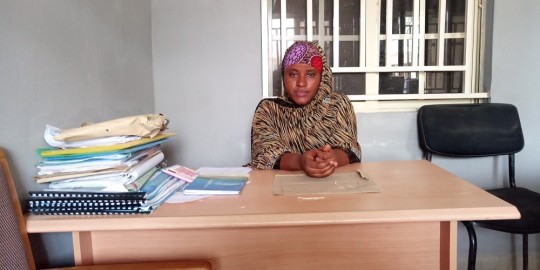
Sumaiyyah Suleiman, Bauchi State Family Planning M&E Officer
Bauchi State, Nigeria
I have worked with Bauchi State Primary Healthcare Development Agency as a Data Processing Officer since 2013. Before The Challenge Initiative (TCI), as a data officer, I did not know how the District Health Information Software (DHIS) worked and I was collating data for only one local government area. Then I started working as a state counterpart to TCI monitoring and evaluation (M&E) and my capacity has now been built—not only on how to log into the DHIS platform, but how to download data, analyze, and compare it to see the differences and improvements. My capacity has also been strengthened to collate monthly data from health facilities and conduct data quality assessments and share them with implementing partners. It wasn't like this before the coming of TCI. I feel very confident now in my role as M&E Officer of the Family Planning Unit in the Primary Healthcare Development Agency.
Contributors: Rabi Ekele, Beeve Hua
0 notes